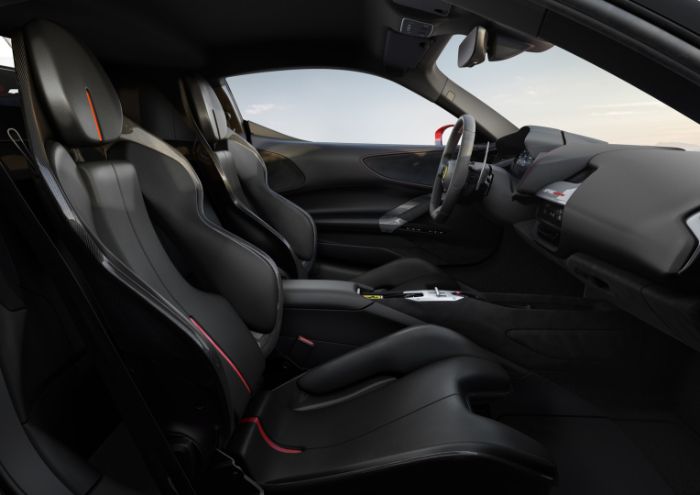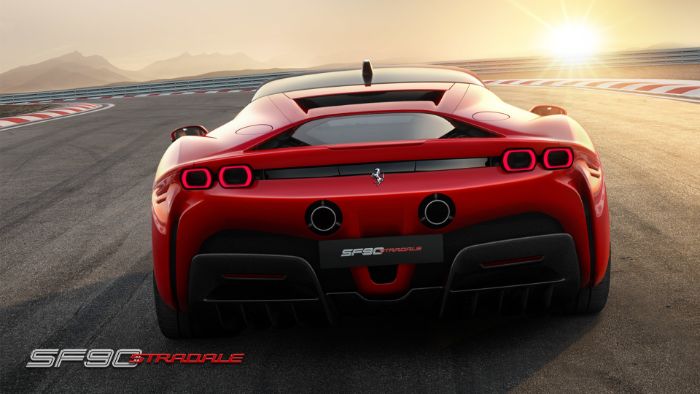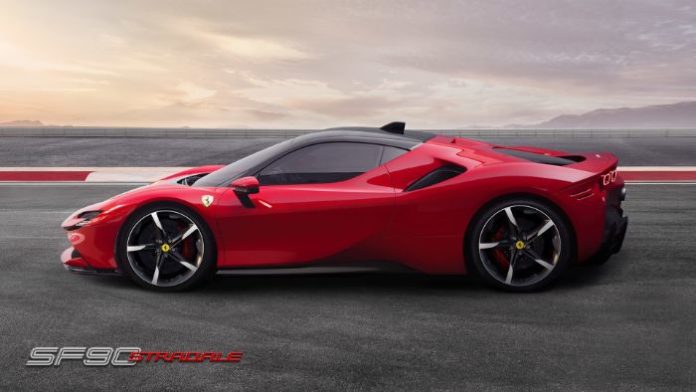The new series production Ferrari SF 90 Stradale is out. The name honors the 90th-anniversary of Scuderia Ferrari and is shared by both the road-going Stradale and the 2019 F1 race car.
It’s Ferrari’s most powerful production car ever – 986 horsepower, delivered by a combination of a twin-turbo V8 engine and 3 electric motors. It goes from 0 to 60 mph in 2.5 seconds and has a top speed of 211 mph.
SF90 Stradale is not a LaFerrari or an F8 Tributo successor. It’s a new car – new chassis, drivetrain technology, vehicle dynamics control software, aerodynamics.
It’s Ferrari exceeding all expectations, as they usually do, leaving everyone breathless.
Powertrain
Like other car makers with F1 divisions, Ferrari also trickles down F1 technology to its road-going sports cars. The powertrain configuration is similar to the ones found in Aston Martin Valkyrie and Mercedes-AMG One.
The 3.9-liter, twin-turbo V8 engine is a new version of the F154 family, which won its fourth consecutive International Engine of the Year award just a week ago. It sits in a mid-engine configuration, producing 769 hp and 590 lb-ft of torque for the rear axle.
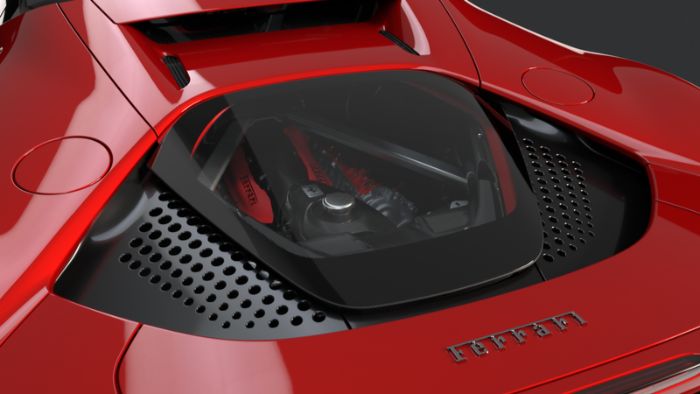
It’s coupled to an F1 8-speed, dual-clutch transmission with an MGUK module in between. The Motor Generator Unit-Kinetic serves as a generator for the battery, a starter for the engine and an additional motor for the rear axle.
In the front, two electric motors are coupled to each wheel, making the car AWD.
When power is required, the three motors provide additional 217 combined horsepower with instant torque delivery.
Under braking, or depending on the drive mode, they become generators recharging the 7.9 kWh lithium-ion battery.
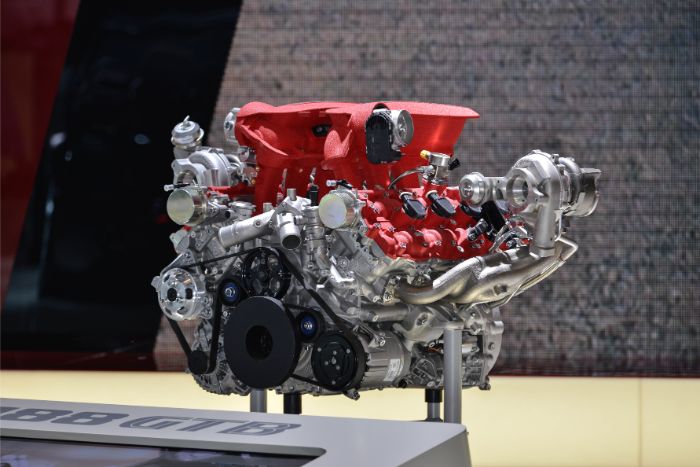
Drive modes and vehicle management
The battery is not big, but it offers 15 miles of range in “eDrive” mode. Ferrari says it has enough juice for a hot lap around Nurburgring in “Qualify” mode, which extracts all available power from the car.
“Hybrid” is the default mode – designed for efficient everyday driving. The engine is used mainly as a generator for the motors unless power is required.
“Performance” is for sports driving on the road.
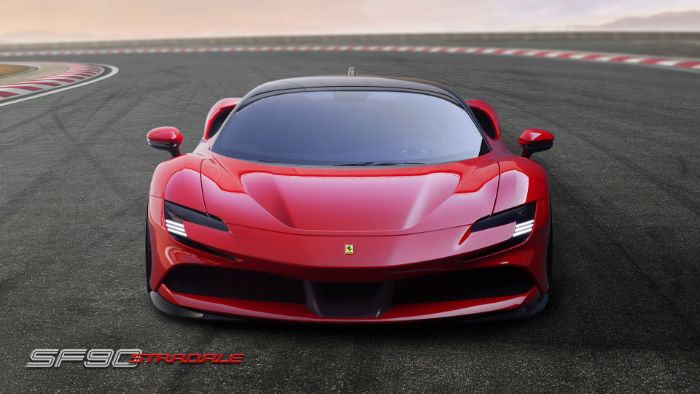
All of this is made very simple for the driver – all you need to do is turn the nob and drive the car. The car is pretty much self-aware. It knows what you’re about to do before you move a muscle and sets up every individual component to help you get the best of your maneuver.
However, on the inside, Ferrari employs prodigious levels of electronic trickery to read your input and the road conditions and optimize its configuration in real time.
- High voltage system management – controlling the batteries, inverter, MGUK and the RAC-e torque vectoring system for the front axle.
- Control software for the engine and transmission
- eSSC – a new vehicle dynamics control system, which manages traction control, brake application, regenerative braking, and torque distribution across all four wheels
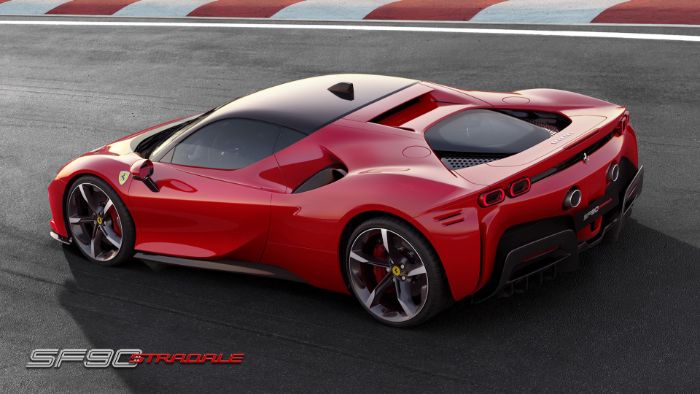
Aerodynamics
Ferrari evolved the F8 Tributo’s aerodynamics incorporating both passive and active elements to produce 860 lbs of downforce at 155 mph. It’s not the most we’ve seen, but the car also not the lightest we’ve seen at 3,461 lbs dry weight.
At the front end, the double wing design and vortex generators underneath, produce downforce for the front axle and channel air through a number of heat exchangers.
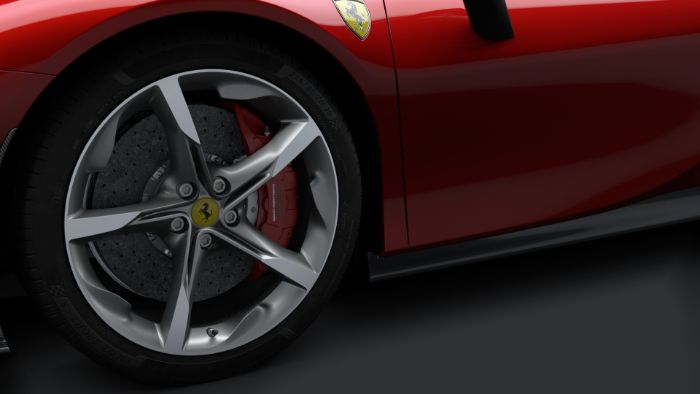
Special research went into the geometry of the wheels which act as fans – pulling air from the inside out and integrating it with the airflow on the side of the vehicle.
In the back, the flying buttresses and the low-mounted engine cover create a slope, increasing airflow to the rear wing. The wing itself has an active drag-reduction system.
When driving straight, a channel that lets air escape underneath the wing, reducing drag. During cornering and braking, a shut-off Gurney closes the channel forcing the rear end down.
Design
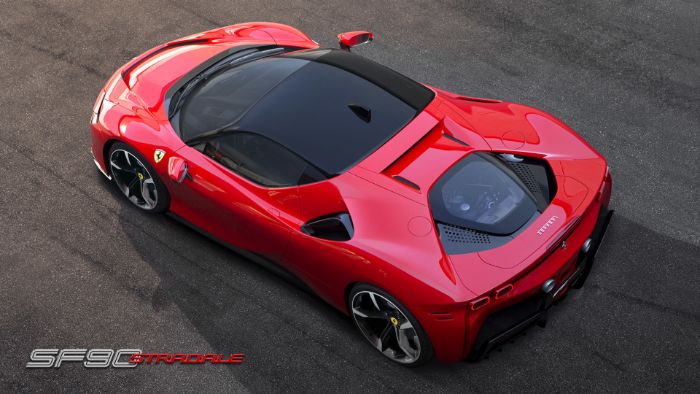
SF 90 Stradale uses a cab-forward design, dictated mostly by Ferrari engineers in order to maximize the efficiency of the aerodynamics and cooling systems.
The body is exquisite – bold and futuristic with accentuated fenders and teardrop cockpit wrapped in the typical Ferrari curves weaving front to back.
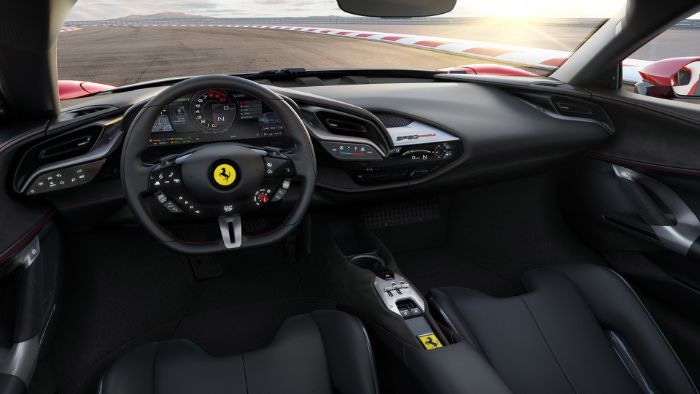
The interior looks like a luxury fighter plane cockpit. Ferrari’s “hands-on-the-wheel” philosophy is clearly shown, concentrating the controls on the steering wheel itself. We see the first ever use of a curved digital display in the 16-inch main instrument cluster.
Everything about the car is sculpted in, positioned in the perfect place to provide you with the absolute best driving experience.
This is why Ferrari is Ferrari. Every new car they produce is a masterpiece on its own – an artwork and an engineering breakthrough at the same time. And the SF 90 Stradale is no exception.
